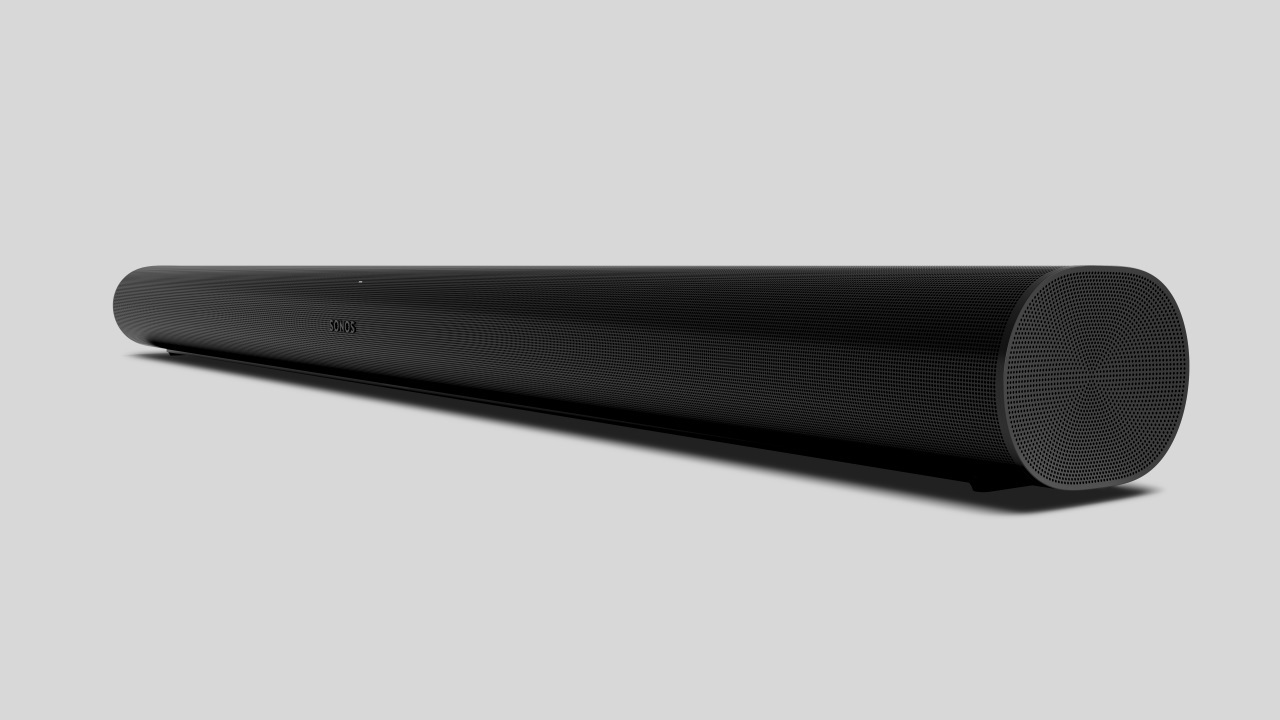The Sonos Arc is a great soundbar that gives you a stunning Dolby Atmos surround sound experience. But how can it get even better? Here are some of the things we hope to see in the Sonos Arc 2.
Better Connectivity with HDMI eARC
The Sonos Arc has only one HDMI port, which connects to your TV’s HDMI ARC input. This means you can’t plug in other devices, like a Blu-ray player or a game console, to the soundbar. You also need a TV that supports Dolby Atmos passthrough, or you won’t get the full effect of the soundbar.
The Sonos Arc 2 could solve this problem by using HDMI eARC, which is a newer version of ARC that can handle more advanced audio formats, like Dolby TrueHD and DTS: X. This would let the soundbar receive uncompressed Dolby Atmos signals from the TV, no matter what device you use. It would also let the soundbar play Dolby Atmos Music, which is a new format that adds spatial audio to music streaming services, like Apple Music and Tidal.
Smaller Size and Sleeker Design
The Sonos Arc is quite big and bulky, measuring 114 cm (45 inches) wide and 8.7 cm (3.4 inches) high. This makes it hard to fit under some TVs, especially if they have low stands or are wall-mounted. It also limits where you can put the soundbar, as it needs enough space above and below it to avoid blocking the drivers that create the height effects for Dolby Atmos.
The Sonos Arc 2 could solve this problem by being more compact and sleek, without losing sound quality or driver count. For example, the Samsung HW-Q950A, which is another Dolby Atmos soundbar, is 123.2 cm (48.5 inches) wide and 6.9 cm (2.7 inches) high, making it slightly longer but thinner than the Sonos Arc. It also has more drivers (16 vs 11) and more channels (11.1.4 vs 5.1.2), which means it can create a more immersive and precise soundstage.
Lower Price or More Value
The Sonos Arc is quite expensive, costing $799 US / EUR 899. This makes it one of the most premium soundbars on the market, and out of reach for many people who want a better TV sound. It also doesn’t include a subwoofer or rear speakers, which are sold separately for extra cost. This means that if you want the full Sonos surround sound system, you will have to spend over $1,500 US / EUR 1,600.
The Sonos Arc 2 could solve this problem by being cheaper, or by offering more value for money. For example, the LG SP11RA, which is another Dolby Atmos soundbar, costs $999 US / EUR 999, but it comes with a wireless subwoofer and two wireless rear speakers, which add more bass and surround effects to the soundbar. It also has more drivers (18 vs 11) and more channels (11.1.4 vs 5.1.2), which means it can produce a more powerful and enveloping sound.
More Power and Clarity
The Sonos Arc can sometimes struggle to deliver enough power and clarity for some content, especially at higher volumes or in larger rooms. This is because the soundbar has a relatively low output power of 200 watts, which is shared among the 11 drivers. This means that some drivers, like the center channel or the height channels, can get drowned out by the others, resulting in a less balanced and detailed sound.
The Sonos Arc 2 could solve this problem by having more output power, or by using more efficient drivers. For example, the Sony HT-A7000, which is another Dolby Atmos soundbar, has an output power of 400 watts, which is twice as much as the Sonos Arc. It also uses a coaxial speaker design, which combines a woofer and a tweeter in one unit, which reduces distortion and improves clarity.
More Customization Options
The Sonos Arc has limited customization options, compared to some of its competitors. The soundbar has a few sound modes, like Movie, Music, Night Sound, and Speech Enhancement, which you can turn on or off in the Sonos app. It also has a Trueplay tuning feature, which uses your iOS device’s microphones to optimize the sound for your room. However, it doesn’t have any manual EQ settings, like bass, treble, or subwoofer level, which you can adjust to your liking.
The Sonos Arc 2 could solve this problem by having more customization options, like a graphic or parametric EQ, a dialogue enhancer, a virtual surround mode, or a room correction feature. For example, the JBL Bar 9.1, which is another Dolby Atmos soundbar, has a 10-band graphic EQ, a dialogue enhancer, a virtual surround mode, and a room correction feature, which you can access and change in the JBL Bar app. It also has detachable rear speakers, which you can place anywhere in the room for more flexible surround sound.
More Streaming Services and Voice Assistants
The Sonos Arc doesn’t support some of the popular streaming services and voice assistants that are available on other soundbars. The soundbar can stream music, radio, podcasts, and more from over 100 services, like Spotify, Apple Music, Amazon Music, Pandora, and Sonos Radio. However, it doesn’t support some of the newer or more niche services, like YouTube Music, Deezer, Qobuz, or Tidal. It also supports voice control via Amazon Alexa or Google Assistant, but not via Siri or Bixby.
The Sonos Arc 2 could solve this problem by supporting more streaming services and voice assistants, or by being more compatible with other devices that can provide them. For example, the Bose Smart Soundbar 900, which is another Dolby Atmos soundbar, supports streaming from over 200 services, including YouTube Music, Deezer, Qobuz, and Tidal. It also supports voice control via Amazon Alexa, Google Assistant, Siri, and Bixby, as well as Apple AirPlay 2 and Spotify Connect.
More Innovative Features and Design
The Sonos Arc doesn’t have any innovative features or design elements that make it stand out from the crowd. The soundbar has a sleek and elegant design, but it is also quite conventional and plain, with a black or white color option, a metal grille, and a touch panel. It also has a standard soundbar shape, with a rectangular body and a curved front. It doesn’t have any unique features or design elements, like LED lights, rotating speakers, or detachable modules.
The Sonos Arc 2 could solve this problem by having some innovative features or design elements, or by being more customizable and adaptable to different scenarios. For example, the Philips Fidelio B97, which is another Dolby Atmos soundbar, has a modular design, that lets you detach the ends of the soundbar and use them as wireless rear speakers or as a portable Bluetooth speaker. It also has a 360-degree LED light ring, which changes color according to the sound mode or the input source.
Summary
The Sonos Arc is a fantastic soundbar that delivers a superb Dolby Atmos surround sound performance that immerses you in the story. However, it also has some room for improvement, especially in terms of connectivity, design, price, power, customization, compatibility, and innovation. We hope that Sonos will address some of these issues and add some of these features in the next sequel, the Sonos Arc 2, which we expect to see in 2023 or 2024. Until then, we will continue to enjoy the Sonos Arc and its amazing sound quality.





